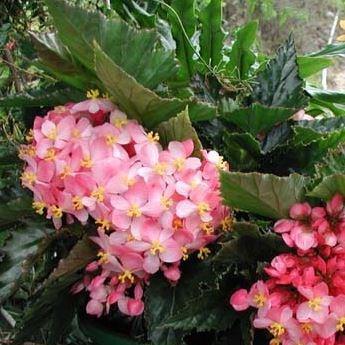
Begonia (Cane Stemmed)
Cane Stemmed Begonia
Cane-stemmed begonias are large, long lived evergreen, perennial plants that often survive for years in a garden, and their easy care also makes them valuable as houseplants. The taller varieties can reach over 1m. in height and require staking. Shorter varieties are a good choice for hanging baskets.
Contributed by @zeeshan
-
Partial shade
-
Occasional watering
-
Not Frost hardy
-
Moist and free draining
Common name
Cane Stemmed Begonia
Latin name
Begonia (Cane Stemmed)
type
Half hardy annual or perennial
family
Begoniaceae
ph
5.5 - 7.5 Acid - Neutral
Plant & bloom calendar
-
Best time to plant
full grown dimensions
 0.60 M
1.00 M
0.60 M
1.00 M
Begonia (Cane Stemmed)
Cane-stemmed begonias are large, long lived evergreen, perennial plants that often survive for years in a garden, and their easy care also makes them valuable as houseplants. The taller varieties can reach over 1m. in height and require staking. Shorter varieties are a good choice for hanging baskets.
Planting
From Early Spring TO Early Spring
All begonias do best in neutral soils or compost and most prefer to be sited in partial shade. When first planting young plants, it is worth removing any early flower buds as this will allow the plant to reach its full size as quickly as possible. When growing begonias as house or conervatory plants, they do best at 13C or more although most will tolerate a winter temperature of 10C. In summer, protect the plants from full sun by siting them where they will receive maximum indirect sunlight.
Propagation by cuttings
From Early Spring TO Early Summer
To propagate, take stem cuttings in spring or summer, ensuring that there are growth buds in the axils of the lower leaves. Root in a mixture of half soilless compost and half course sand and keep at a temperature of 18C.
Planting
From Late Spring TO Early Summer
All begonias do best in neutral or slightly acid soils or compost, and most prefer to be sited in partial shade. Some will suffer in the sun. All begonias are frost tender. When first planting young plants, it is worth removing any early flower buds, as this will allow the plant to reach its full size as quickly as possible. Plant out bedding plants when there is no risk of frost. Water in well but as with all begonias, try to keep water away from foliage if possible as although they like to be kept moist, too much water on the foliage can cause mildew and spoil your display.
Propagation by seed early
From Mid Winter TO Late Winter
Sow seed in mid to late winter in a propogator and maintain a temperature of 20-25C. Do not cover the seed with compost. Maintain high humidity with a fine water spray. Seeds are like dust so care needs to be taken. As they begin to germinate, protect the seedlings from full direct sunlight and prick out after about six weeks. Begonias are among the more difficult plants to raise from seed. Even gardeners with well heated greenhouses often resort to buying small young plants in early or mid-spring to bring on to planting stage. Harden off before planting out.
Propagation by cutting
From Early Summer TO Late Summer
Cuttings may be propagated for additional plants. Divide in spring for more outdoor begonia plants. Cuttings can be done by taking a stem and taking off the lower leaves and making a fresh cut just under the nest leaf, dip into rooting compound and plant in a pot with damp sand to encourage roots, do not let it dry out.

























